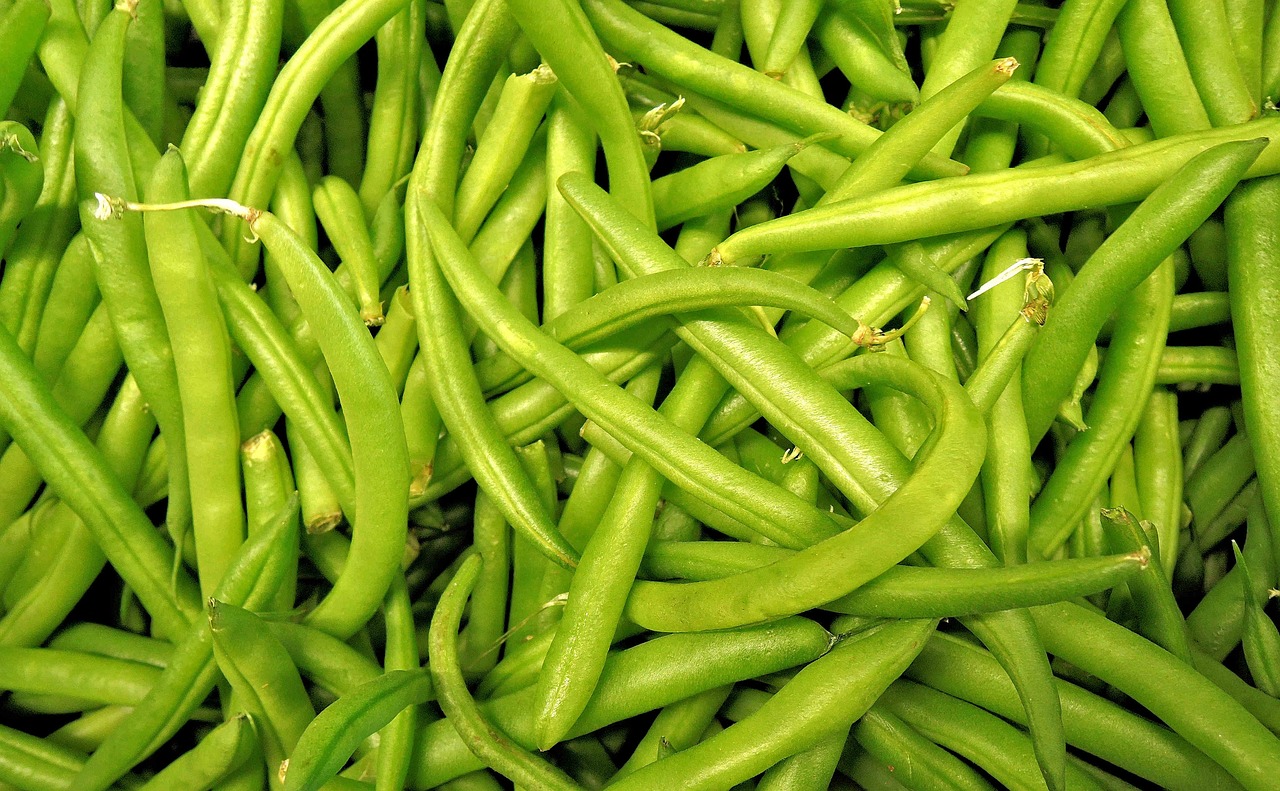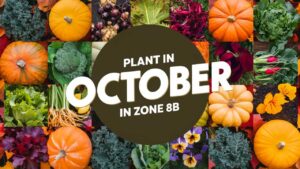In this guide, we’ll explore everything you need to know about selecting the ideal fertilizer for your green bean plants, including understanding their nutrient needs, the different types of fertilizers available, and best practices for application.
Fertilizer For Green Beans
| Image | Name | Rating | Shop |
|---|---|---|---|
 | Osmocote |  | |
 | Karrikaid Vegetable Root Booster |  | |
 | EarthGrow Fertilizer |  |
Osmocote
Osmocote Smart-Release Plant Food Flower & Vegetable is a reliable choice for green bean cultivation. Its NPK formula of 14-14-14 provides balanced nutrition for vigorous and abundant growth above ground, as well as strong root development.
This fertilizer’s slow-release mechanism ensures a consistent supply of nutrients to your plants over time. The product is also designed to adapt to the unique needs of green beans, promoting healthy growth without risking damage from over-nutrition. Coverage can be easily adjusted based on your garden size, with 1 pound covering approximately 40 square feet.
Karrikaid Vegetable Root Booster
The Vegetables Booster from Karrikaid is a great choice for growers looking to enhance their vegetable yields. It works by improving nutrient availability in the soil, promoting robust root development, and supporting plant strength.
We recommend this liquid fertilizer booster because it has been proven to show significant improvements in vegetable yields through rigorous testing. Its concentrated formula makes it an economical choice for frequent applications, lasting up to 64 gallons of solution from a single 32 fl oz bottle. Mix one tablespoon per gallon of water and apply every two weeks for optimal results.
EarthGrow Fertilizer
For your green bean garden, consider using Down to Earth Organic Vegetable Garden Fertilizer 4-4-4, 5 lb. This fertilizer is made from all-natural ingredients and is free of toxic chemicals, making it safe for beneficial insects, pets, and the surrounding ecosystem.
This slow-release formula delivers nutrients gradually, reducing the risk of nutrient leaching and providing long-lasting support for your plants. Its balanced 4-4-4 NPK ratio makes it specifically suitable for vegetables, promoting strong roots, foliage, and fruit development in your green beans. The easy-to-use 5 lb box can be applied directly to the soil or mixed into garden beds, making it a versatile option for any gardener.
Veggie FeED
Jack’s Classic 12-15-30 Veggie Feed Water-Soluble Fertilizer is a great option for green beans and other blooming vegetable plants. Its analysis of 12-15-30 provides a balanced mix of nutrients for vigorous growth from root to leaf, helping plants flower and set fruit abundantly.
This water-soluble powder is easy to use, simply measure out the right amount with the included spoon and mix it with water to create multiple gallons of liquid fertilizer. You can also use it as a foliar spray or for continuous feeding through a system. Plus, it contains added micronutrients to provide your plants with everything they need for optimal growth and health without requiring additional feedings.
Organic Plant Magic
If you’re looking for a high-quality fertilizer for your green beans, we recommend Organic Plant Magic – Truly Organic Slow Release Granular Fertilizer. This product is designed to provide long-lasting results and works well with a variety of plants.
The benefits of using Organic Plant Magic include amazing growth, color, and flavor in your plants. It’s easy to use and can be applied directly into planting holes or mixed with soil for optimal results. With its slow-release formula, you’ll only need to apply it once a month – making it a convenient option for busy gardeners. Its all-natural ingredients provide everything your green beans need to thrive, resulting in healthier and more productive plants.
Organic Gardener
The Dr. Earth Organic 5 Tomato, Vegetable & Herb Fertilizer Poly Bag is a great choice for green beans due to its all-around nutrient benefits. By giving your plants a boost of primary plant nutrients, you can help them grow strong and healthy.
This fertilizer stands out from others on the market because it contains only organic and natural ingredients, free of GMOs, chicken manure, and sewage sludge. Additionally, it introduces beneficial soil microbes into your plants’ environment to increase yields and overall crop health. The end result is more abundant and nutritious crops that are sure to satisfy any gardener’s needs.
Miracle-Gro Shake ‘N Feed Plant Food
Miracle-Gro Shake ‘N Feed Tomato, Fruit and Vegetable Plant Food is a solid choice for fertilizing green beans. It’s designed to provide up to 3 months of feeding with just one application, making it convenient for gardeners on-the-go.
This fertilizer contains calcium which helps to form stronger plant walls, leading to better quality and longer-lasting fruits – exactly what you want with your green bean harvest. The Shake ‘N Feed formula is also easy to apply, simply sprinkle the product over the soil and water to get started. With its natural ingredients, Miracle-Gro’s offering provides even better results versus unfed plants.
Smart Grower Plant Power Up Organic Fertilizer
This product seems to be a good option for green bean growth due to its fast-acting formula and balanced blend of essential nutrients. Smart Grower Plant Power Up Organic Fertilizer is made from organic, non-toxic ingredients that are safe for people and plants alike.
The fertilizer contains beneficial microbes such as Bacillus velezensis and Fulvic Acids that work together to enhance soil health and stimulate robust plant growth. With essential nutrients like Nitrogen, Potassium, and Phosphorus, this product ensures your green beans receive all the vital elements they need to thrive.
Cz Garden 5-10-10 Fertilizer
This fertilizer for green beans is a good choice if you’re looking for something reliable and long-lasting. The Cz Garden 5-10-10 Tomato & Vegetable Fertilizer meets that requirement with its slow-release formula that avoids the risk of fertilizer burn found in many fast-releasing options.
Another advantage of this product is its resealable packaging, which allows you to easily pour out just what your green beans need and store the rest for later use. The fact that it’s made in the USA with premium quality ingredients gives added assurance that it will perform as expected, promoting vigorous growth and big blooms in your garden.
Understanding Green Bean Nutrient Needs
The Essential Nutrients
Green beans require a balanced supply of nutrients to flourish. The primary nutrients include nitrogen (N), phosphorus (P), and potassium (K). These macronutrients are vital for the overall health, growth, and productivity of the plants.
Nitrogen (N): This nutrient is crucial for leafy growth. Green beans, being legumes, have the unique ability to fix nitrogen from the atmosphere through their roots thanks to symbiotic bacteria. While they can derive some nitrogen naturally, they still benefit from additional nitrogen in the early growth stages to promote robust foliage.
Phosphorus (P): Phosphorus is essential for root development and flowering. This nutrient aids in the establishment of the plant, ensuring it has a solid foundation for healthy growth and a successful yield.
Potassium (K): Potassium plays a key role in regulating water uptake and overall plant health. It helps strengthen the plant’s resilience against disease and adverse environmental conditions. Beans require potassium to produce a healthy yield.
Micronutrients Matter Too
In addition to macronutrients, micronutrients like calcium, magnesium, and iron are necessary for green beans. Though required in smaller quantities, these nutrients significantly impact plant health. For instance, calcium helps in cell wall structure, magnesium is key for photosynthesis, and iron is essential for chlorophyll production.
Identifying Soil Nutrient Deficiencies
Before you can choose the best fertilizer for your green beans, you should assess the nutrient levels in your soil. Conducting a soil test is an effective approach to determine nutrient deficiencies. Many agricultural extensions or gardening centers offer soil testing services, or you can purchase self-testing kits.
Signs of Nutrient Deficiencies
Yellowing Leaves: Often indicative of a nitrogen deficiency, especially if the leaves are older and turning yellow while the veins remain green.
Stunted Growth: If your green beans aren’t growing at expected rates, it may indicate a phosphorus deficiency.
Brown Leaf Edges: This might be a sign of potassium deficiency, as potassium is essential for water regulation and disease resistance.
pH Levels
It’s also important to be mindful of the soil pH, ideally between 6.0 to 7.0 for green beans. If the pH is too low or too high, it may hinder nutrient availability. If your soil is outside this range, consider incorporating lime (to raise pH) or sulfur (to lower pH) before planting.
Types of Fertilizers
Having a grasp of green beans’ nutrient needs leads to the next step: understanding the different types of fertilizers available.
Organic Fertilizers
Compost: A garden staple, compost enriches the soil with nutrients and improves soil structure. It releases nutrients slowly, making it ideal for nurturing plants over time.
Well-Rotted Manure: Manure from herbivores (like cows, horses, or chickens) is another excellent source of organic nutrients. It’s rich in nitrogen and helps improve soil texture.
Bone Meal: This is an excellent source of phosphorus and calcium, supporting healthy root development and flowering.
Fish Emulsion: A nitrogen-rich organic fertilizer that is made from fish waste. It offers a quick nutrient boost but has a lower concentration of nutrients compared to synthetic options.
Synthetic Fertilizers
Granular Fertilizers: These are commonly used and provide a concentrated source of nutrients. They can be formulated specifically for legumes, featuring a balanced N-P-K ratio or tailored ratios to suit the growth stages of beans.
Liquid Fertilizers: Fast-acting and easily absorbed, liquid fertilizers can be applied directly to the soil or as foliar feeds. They are effective for providing immediate nutrition.
Slow-Release Fertilizers: These are designed to release nutrients gradually over time, providing consistent nourishment to your green beans.
Specialized Fertilizers
Some brands offer fertilizers specifically designed for legumes. These usually have lower nitrogen content and higher phosphorus and potassium levels, resulting in optimized growth conditions for green beans.
Choosing the Right Fertilizer
Matching Nutritional Needs to Fertilizer Types
When selecting a fertilizer for your green beans, consider their growth stage:
Pre-planting: If testing indicates a nutrient deficiency or poor soil quality, it’s a good time to amend your soil with organic compost, well-rotted manure, or a balanced granular fertilizer. Aim for a fertilizer with a higher nitrogen content at this stage to encourage healthy leafy growth.
Early Growth: During the early stages of growth, applying a nitrogen-rich fertilizer can promote strong leaf development. Apply compost or a diluted liquid fertilizer every few weeks to foster young plants.
Flowering and Fruiting Stage: As plants begin to flower and set fruit, it is essential to switch to fertilizers with higher phosphorus and potassium levels. This shift supports root and flower development while preparing the plants for a fruitful yield.
Packaging and Labels
When choosing any fertilizer, always read the label. Packaging often provides valuable information regarding the N-P-K ratio (for instance, a fertilizer labeled 5-10-5 has 5% nitrogen, 10% phosphorus, and 5% potassium). Choose a ratio that aligns with the plants’ lifecycle needs.
Application Techniques
Timing
The timing of fertilizer application is just as important as the choice of the fertilizer itself. Here are some timing tips:
Before Planting: Incorporate amendments like compost or well-rotted manure into the soil a few weeks prior to planting to allow microorganisms to begin breaking down the nutrients.
During Growth: For granular fertilizers, follow the recommended application rates and timings in the product instructions, typically applied at planting and then again when the plants start to flower. For liquid fertilizers, you might choose to apply more frequently, every couple of weeks.
Method of Application
Soil Application: This is the most common method, where fertilizers are mixed into the top layers of soil around the plants. Ensure to follow up with watering to help dissolve the fertilizer and move it closer to the roots.
Foliar Feeding: Especially with liquid fertilizers, foliar application directly on the leaves can provide a quick nutrient boost. This method is most effective when done during the early morning or late afternoon to prevent leaf scorch.
Best Practices for Fertilizing Green Beans
Don’t Over-Fertilize
One of the biggest mistakes gardeners make is over-fertilizing. This can lead to excessive foliage growth at the expense of fruit production, and can also harm the plants. Always adhere to recommended application rates and intervals to ensure balanced growth.
Monitor and Adjust
After applying fertilizer, keep an eye on your green beans for changes in growth patterns. If you notice yellowing leaves, stunted growth, or poor flowering, it might be worth revisiting your fertilization strategy.
Watering Considerations
Regular watering is essential, particularly following fertilizer application. Water helps dissolve nutrients and makes them available for uptake by the roots. Aim to keep the soil consistently moist, but avoid waterlogging that can lead to root rot problems.











